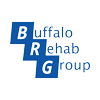Scoliosis in Children: Signs, Risks, and How Physical Therapy Can Help
Scoliosis isn’t just a medical term—it’s a reality that affects millions of children around the world, including perhaps someone in your own family.
The condition, characterized by an abnormal curvature of the spine, can lead to significant health challenges if not identified and addressed early.
At Buffalo Rehab Group, our pediatric physical therapy team is deeply committed to not only treating scoliosis but also empowering you with the knowledge to spot the early signs.
What is Scoliosis?
Scoliosis is a medical condition characterized by an abnormal curvature of the spine. While it can occur at any age, it is most commonly identified in children and adolescents. The curve can vary in severity and, if left unchecked, may lead to noticeable physical deformities and various health complications.
Signs to Watch for in Your Child
Early detection of scoliosis is crucial for effective management and treatment. Here are some signs that parents and caregivers can look out for:
- Uneven Shoulders or Shoulder Blades: One shoulder blade may appear more prominent or higher than the other.
- Uneven Hip Alignment: You might notice one hip seems higher or more pronounced.
- Abnormal Spine Rotation: When viewed from behind, the spine may appear rotated or twisted.
- Labored Breathing: Due to the curvature pressing against the lungs and reducing their capacity.
- Unequal Rib Expansion: This can be observed when the child takes a deep breath, indicating a difference in ribcage alignment.
- Back Pain: Although less common in children than adults, persistent back pain can be a sign of scoliosis.
The Risks of Untreated Scoliosis
If scoliosis is not treated, the spinal curvature may worsen over time. This progression can lead to severe physical deformities, significant pain, and even impair the function of vital organs such as the heart and lungs. The psychological impact, including issues with body image and self-esteem, can also be profound.
How Can Physical Therapy Help?
Physical therapy plays a vital role in the management of scoliosis, especially in growing children. Physical therapists are trained to:
Provide Tailored Exercises: These exercises help to strengthen the muscles around the spine, promote better posture, and potentially slow the progression of the curve.
Educate Families: Our therapists work closely with families to ensure exercises are performed correctly at home, which is essential for the best outcomes.
Use Specialized Techniques: Techniques such as bracing are sometimes recommended to prevent further curvature as the child grows.
Remember, awareness and early intervention are key to managing scoliosis effectively. By keeping an eye out for the signs listed above and consulting with a pediatric physical therapist, you can take proactive steps toward safeguarding your child’s health and well-being.
Are you worried about your child's physical development?
If you’re concerned about scoliosis and your child’s physical development or have questions about Pediatric Physical Therapy, Buffalo Rehab Group can help.
Our dedicated team is here to provide guidance and support tailored to your child’s unique needs. Contact us today, and let’s ensure a bright and healthy future for your little one!
